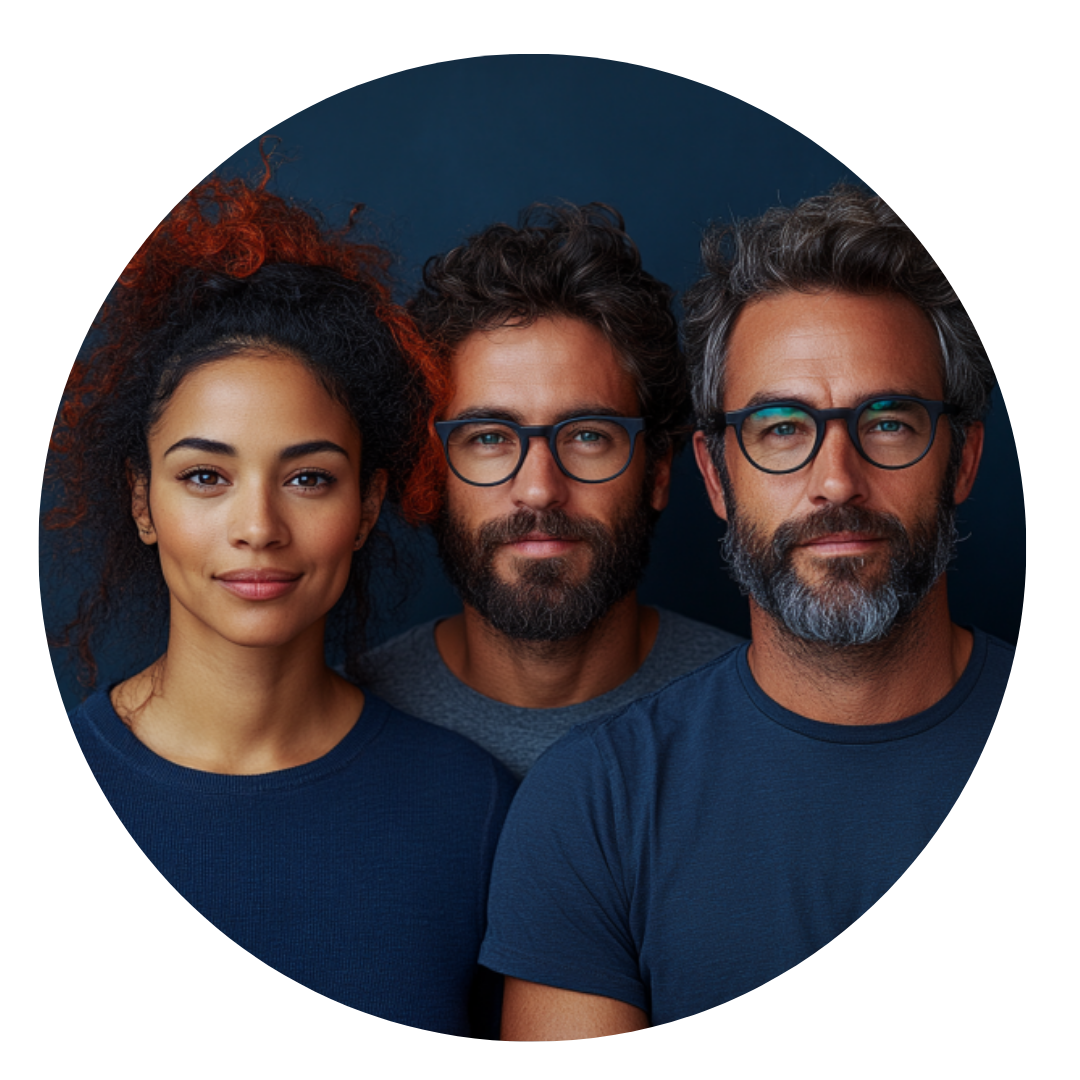Meta's Cupid: Facebook Dating Gets an AI Assist
Facebook's new AI dating assistant landed this week, promising to cure "swipe fatigue" with algorithmic matchmaking that sounds suspiciously like a...
7 min read
 Writing Team
:
Oct 21, 2025 8:00:00 AM
Writing Team
:
Oct 21, 2025 8:00:00 AM
-Oct-20-2025-07-21-56-3069-PM.png)
Facebook just launched a feature that uses AI to surface photos from your camera roll, suggest edits, and create collages designed to maximize shareability. It's opt-in, privacy-controlled, and solves a real problem: the friction between capturing moments and actually sharing them. It's also another algorithmic layer between your lived experience and how you present that experience online—and that's worth examining before we collectively decide this is purely a convenience play.
The feature does what Facebook says it does. It scans your camera roll (with permission), identifies "hidden gems" buried among screenshots and receipts, applies AI enhancements and creative edits, and assembles collages or video montages optimized for engagement. You control what gets shared and with whom. Nothing leaves your device without explicit approval. According to Facebook, the AI doesn't use your photos to train Meta's models unless you actively edit them with AI tools or choose to share them.
That's the technical implementation. The more interesting question is what happens when AI starts curating which moments from your life are worth memorializing and how those moments should look when you share them.
Facebook frames the problem they're solving clearly: people capture moments but don't share them because photos aren't "shareworthy" or because creating something polished takes time and skill. The AI removes both friction points by automatically identifying which photos meet some algorithmically-determined standard of shareability and then editing them to enhance that quality.
But what exactly does "shareworthy" mean in this context? Facebook hasn't published the criteria their AI uses to surface photos or suggest edits, but we can infer some factors based on what performs well on social platforms: clear faces, good lighting, recognizable locations, group shots rather than solo portraits, activities that signal status or lifestyle quality, aesthetically pleasing composition.
Photos that generate engagement tend to emphasize positive emotions, social connection, and aspirational experiences over mundane reality or negative moments. If Facebook's AI is optimized to identify "shareworthy" content, it's likely trained on billions of examples of what actually gets shared and engaged with on the platform—which means it's learning to recognize the same filtered, curated version of life that already dominates social feeds.
The feature essentially automates the editorial judgment that users previously made manually: which moments are worth presenting publicly, and how should they be framed to maximize positive reception? That automation is convenient. It's also another algorithmic nudge toward presenting life as performance rather than documentation.
Beyond selecting which photos to surface, Facebook's AI suggests "creative edits" and "enhancements" to make content "stand out." We don't know specifically what edits the AI applies, but common social media enhancement tools include color correction, exposure adjustment, skin smoothing, background blurring, and composition cropping.
These edits are individually minor—a little brightening here, some saturation there—but cumulatively they shift photos away from literal documentation and toward idealized representation. According to psychological research on edited social media imagery, even subtle enhancements increase viewers' perceptions that the content is aspirational rather than realistic, contributing to social comparison effects and dissatisfaction with unedited reality.
The concerning part isn't that Facebook offers editing tools—photo filters have existed since Instagram launched in 2010. The concerning part is that Facebook now assumes editing is the default state for sharing, to the point where AI automatically applies enhancements without users explicitly requesting them. The feature's entire premise is "your photos need improvement before they're shareworthy."
That assumption is embedded in the product design. Users don't opt into editing; they opt into a system that surfaces photos with edits already applied. You can presumably remove edits before sharing, but the default state is enhanced, filtered, and algorithmically optimized. That's a subtle but meaningful shift from "here are tools if you want to edit" to "here are your memories, improved."
Social media has always involved curation—people have selected which moments to share since the beginning of photography. But there's a difference between human curation based on personal judgment about what matters and algorithmic curation based on what performs well in engagement metrics.
When you manually select photos to share, you're making subjective decisions about what you found meaningful, memorable, or worth preserving. When AI selects photos based on "shareability," it's optimizing for a different goal: content likely to generate likes, comments, and shares. Those goals occasionally align, but they're not identical.
Users consistently report tension between presenting authentic experiences and curating content that performs well algorithmically. Features that automate curation toward engagement metrics exacerbate this tension by making the algorithmically-optimized version the path of least resistance.
Facebook's feature makes it easier to share moments—but specifically, it makes it easier to share algorithmically-enhanced, AI-selected, engagement-optimized versions of moments. The friction it removes isn't just technical; it's the deliberate consideration about whether a moment needs editing, whether it's worth sharing, and how you want to present your life to others.
That deliberate consideration is what keeps social media sharing tethered to actual experience rather than becoming purely performative. When AI handles curation and enhancement automatically, the gap between lived reality and presented reality widens—not dramatically with any single photo, but incrementally across thousands of AI-curated shares that collectively construct a version of your life optimized for engagement rather than accuracy.
Facebook emphasizes that the feature is opt-in, that suggestions are private until you choose to share them, and that they don't use camera roll photos for AI training unless you actively edit or share them. These are meaningful privacy protections that address legitimate concerns about AI accessing personal photos.
But privacy is only one dimension of the question. Even with perfect privacy controls, there's still the question of whether automating the curation and enhancement of your life into shareable content is something you want, regardless of who sees the data in the process.
The feature solves a real problem for people who genuinely want to share more but find manual photo selection and editing time-consuming. A significant percentage of social media users report feeling pressure to maintain active posting schedules but lacking time or skill to create polished content. For those users, AI-assisted sharing is genuinely helpful.
The question is what happens when this becomes normalized—when the default expectation is that shared photos are AI-selected and algorithmically enhanced, and unedited documentation becomes unusual or even stigmatized as "low effort." We're already seeing this dynamic with filters and beauty enhancement tools, where studies show that users increasingly judge unfiltered photos as less attractive simply because filtered versions have become the baseline expectation.
Facebook's new feature fits within Meta's broader strategic direction: use AI to reduce friction in content creation, increasing the volume of sharable material on the platform while making that content more engaging through algorithmic optimization.
This makes business sense. More content means more opportunities for ads, more time spent on platform, more data for training recommendation systems. According to Meta's recent earnings reports, engagement metrics directly correlate with ad revenue, creating strong incentives to increase both content volume and content quality through whatever means available.
AI-assisted content creation accomplishes both goals simultaneously. Users share more because the barrier is lower. What they share performs better because it's optimized for engagement. The platform gets more inventory and better retention. Everyone wins—except possibly the relationship between online presentation and offline reality, which becomes increasingly mediated by algorithmic judgment about what's worth sharing and how it should look.
The feature also positions Facebook as creator-friendly at a moment when platforms are competing intensely for content. TikTok makes video creation frictionless through editing tools and effects. Instagram offers sophisticated filters and layout options. Facebook's contribution is automating the earlier step of content selection itself, using AI to identify shareable moments before users even think to look for them.
If you're considering enabling this feature, several factors are worth weighing beyond just convenience:
Content volume vs. content meaning: Do you want to share more moments, or more meaningful moments? AI optimization increases volume by lowering barriers, but it doesn't necessarily increase meaningfulness. Sometimes friction serves a purpose by forcing consideration about what's actually worth sharing.
Algorithmic taste vs. personal taste: Are you comfortable with AI determining which photos from your life are "shareworthy"? The algorithm might surface moments you wouldn't have chosen yourself, or miss moments you consider significant but that don't match engagement patterns.
Edit transparency: If you share AI-enhanced photos, will you note they're edited? Or does that feel unnecessary because subtle enhancement is now universal? This is a personal choice, but it affects whether your social presence reflects actual experiences or algorithmically-optimized versions.
Comparative effects: How will seeing others' AI-curated, algorithmically-enhanced content affect your perception of your own life? If you know most photos you see are optimized by AI, does that reduce social comparison effects, or amplify them by raising baseline expectations?
Opting out: Can you resist using the feature if it becomes normalized? If everyone else is sharing AI-enhanced content regularly, will you feel pressure to maintain similar posting frequency and quality even if you prefer more selective sharing?
These aren't reasons to avoid the feature—they're considerations that deserve thought before automating a significant portion of how you present your life online.
Facebook's new feature is well-executed, privacy-conscious, and genuinely useful for users who want to share more with less effort. It's also another step toward algorithmically-mediated reality, where AI increasingly determines not just what content you see, but what content you create and how you present your own experiences.
The concerning trajectory isn't about any single feature—it's about the cumulative effect of dozens of features across multiple platforms that collectively shift social media from documentation toward performance, from selective sharing toward algorithmic curation, from "here's what happened" toward "here's the version of what happened that the algorithm determined was most shareable."
We're not yet at a point where online presentation bears no resemblance to offline reality. But we're moving in that direction incrementally, and each new AI feature that automates curation and enhancement accelerates the movement. The gap between experienced reality and presented reality has widened measurably over the past decade, correlating with increased use of editing tools and algorithmic content selection.
Facebook's feature won't single-handedly transform social media into pure performance. But it does make performance easier, and it does normalize the idea that your photos need algorithmic improvement before they're worth sharing. That normalization has consequences—not immediately dramatic ones, but slow accumulating effects on how we perceive both our own lives and others' presentations.
Maybe that's an acceptable trade for convenience. Maybe automated curation and enhancement are simply the next evolution of social sharing, no more problematic than filters or cropping. Or maybe we should occasionally question whether every reduction in friction is actually progress, and whether some barriers exist for reasons beyond just inefficiency.
The feature exists. It works as advertised. Whether you enable it depends on how you weigh convenience against considerations that Facebook's announcement doesn't address—but probably should.
Need communication strategies that balance efficiency with authenticity? Winsome Marketing's growth experts help brands maintain human connection even when using AI tools.

Facebook's new AI dating assistant landed this week, promising to cure "swipe fatigue" with algorithmic matchmaking that sounds suspiciously like a...

Meta just handed developers a seven-billion-parameter vision model trained on 1.7 billion unlabeled images—and unlike most AI releases that feel like...

4 min read
Mark Zuckerberg just announced that Meta AI has reached one billion monthly active users, and if you're not terrified, you haven't been paying...